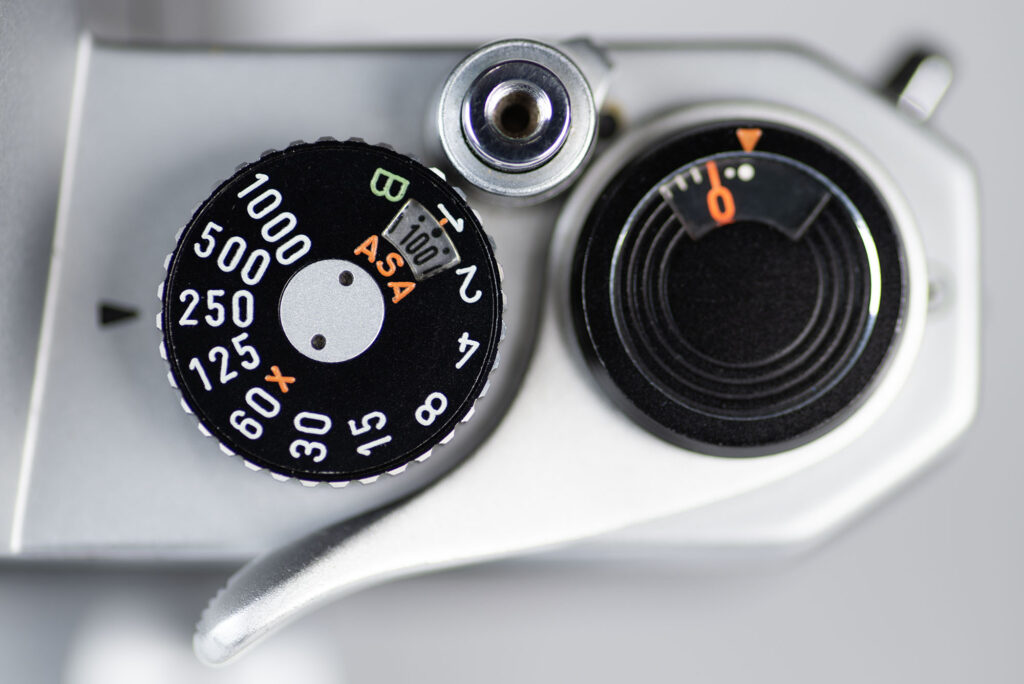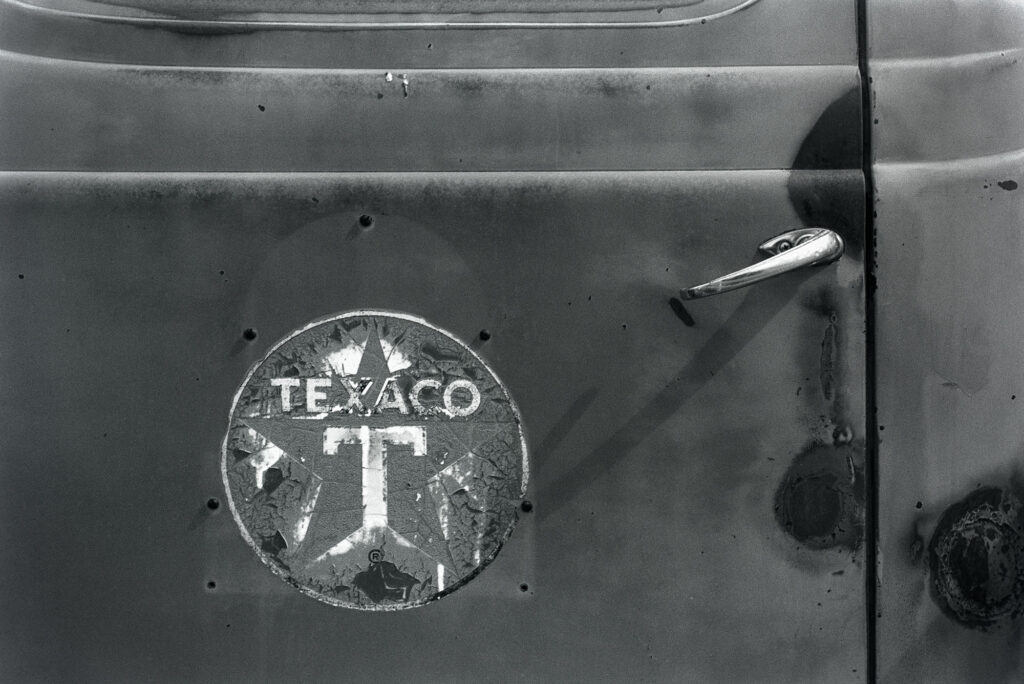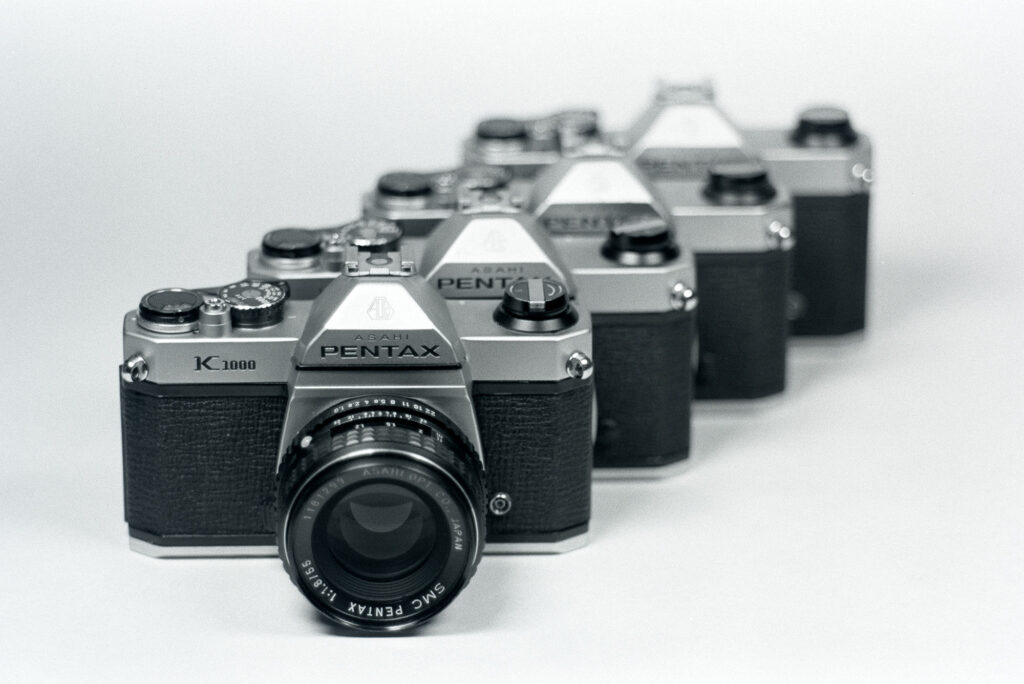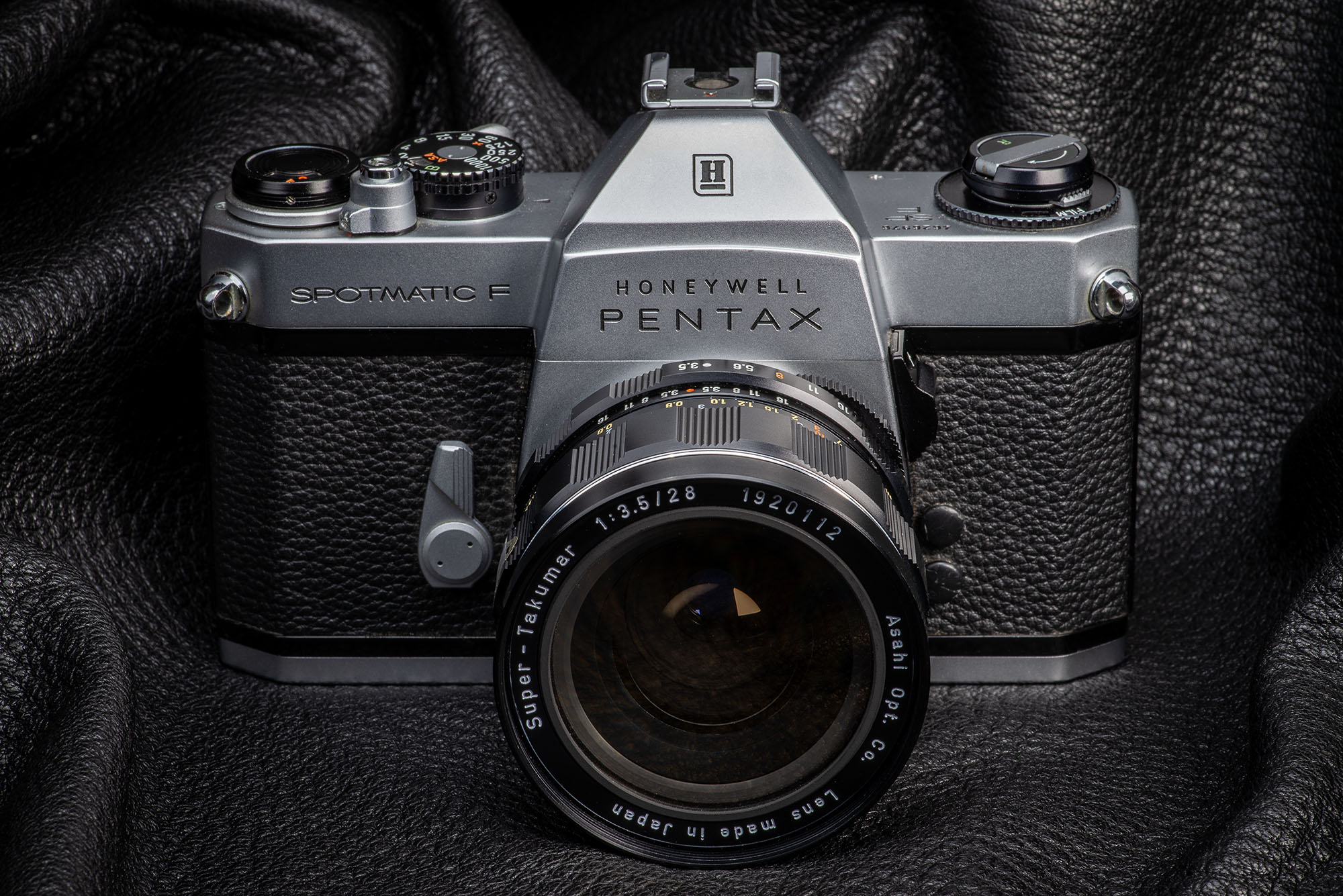In a previous post about the Spotmatic SP, I explained that the search for a decent M42 body came about as a result of the sudden acquisition of a bunch of M42 lenses. Well, another bunch of M42 lenses came along, as did a couple of other Spotmatics, albeit non-functioning. Both this body and an ESII were labeled “Defective” with fine print indicating that the mirror sticks in the up position. This is commonly caused by dried lubricant in an easily accessible gear train just under the bottom plate. I took a chance, purchased both bodies, and managed to revive them both.

The Spotmatic F and ESII were the last models in the Spotmatic dynasty timeline. Spotmatics had evolved as far as they could, as the industry was moving toward bayonet mount lenses and superior metering systems. Fully mechanical, the Spotmatic F contains the best features of previous models but sports a few new features.
First and foremost, it is capable of full-aperture metering. This was only made possible by a feature of the latest line of lenses designated “SMC Takumar”, which have an additional metering tab at the rear of the lens that communicates the aperture to the camera body. Currently I have no lenses of this series, so I am grateful that the designers saw fit to maintain compatibility with older lenses by keeping the stop-down metering lever from previous designs.

Second, a hot shoe was included in the design. My Spotmatic SP has a removable cold shoe accessory that clips to the viewfinder. (A brief explanation of the difference: A cold shoe is simply a mechanical mount to hold a flash in place, whereas a hot shoe will trigger the flash when the shutter opens. To trigger a flash in a cold shoe, one must attach the flash to the cold shoe, and connect a sync cable from the flash to the PC socket on the camera body.) The industry was moving away from the dependence on these sync cables, and hot shoes were the future. The Spotmatic F (F for “flash”, perhaps?) offered that convenience.

Third, a shutter button lock was included that prevents photographs of the inside of one’s camera bag. If the shutter is cocked, but the camera is to be stowed, then the locking collar around the shutter release can be turned to prevent accidental release. This locking collar can also be used for long exposures if a locking cable release is not available. By rotating and locking the collar after the shutter has been opened on the “B” or bulb setting, the shutter is locked open. The shutter is closed when the locking collar is returned to its original position.

All the Spotmatics I have handled have been wonderfully built machines. Using them is beyond enjoyable. Fit and finish are impeccable, the mechanics are precise and smooth, and they are just beautiful to my eyes. That said, the heart of image creation lies in the optics. Takumar lenses are still legendary, and for good reason. They are great lenses, both in terms of mechanical precision and optical quality. The combination of a well-built camera and extraordinary lenses is a definite win.

Admittedly, there are some drawbacks, and they might be deal-breakers for some. The meter is powered by a long-discontinued mercury-based 1.35v battery for which there are few suitable substitutes. There is some discussion on web reviews about whether this model has a bridge circuit that allows modern 1.5v batteries to be used. I cannot prove whether there is or isn’t, but consider this: The previous model, the SP, has a bridge circuit. Moreover, I have found the meter to match other (trusted) meters in a controlled test while powered by a 1.5v battery. I can only conclude that it probably does have a bridge circuit. Regardless, it works fine with a modern PX625A battery.

Also, when using SMC Takumar lenses, the meter reads through a fully open aperture with the meter/DOF switch in the down position. We can assume that while the lens is mounted, the meter is on. When using older Super-Takumar lenses, the meter/DOF switch must be in the up position to activate the meter and make an accurate reading at the actual aperture. There is also a bit of discussion in forums about whether the meter is constantly on as long as a certain amount of light is coming through the lens. The prevailing advice is to keep a lens cap on, or store in a dark case to prevent battery drain. (If I come to a definitive conclusion about this, I will update this post.) For open display, it is just good sense to remove the battery, anyway.

Screw-mount lenses are antiquated, and relatively inconvenient when compared to bayonet mount optics. That may be considered a drawback, but it also can be an advantage. There are M42 mount lenses of many focal lengths, max apertures and brands out there, owing to the popularity of the system. Cameras with the M42 mount were built in Germany, Japan and Russia, and aftermarket manufacturers built lenses by the millions to satisfy the demand for budget-friendly optics. With the exceptions of a few cult classics, they are quite inexpensive and can represent a path to building a complete kit at little expense. Many of these lenses are underrated and overlooked, and are great bargains as a result.

For me, the Spotmatic’s potential drawbacks are completely outweighed by the joy of using these cameras. They represent a high point in camera and lens design, exhibiting a manufacturing philosophy I find rare in today’s disposable world. Asahi Optical Company took pride in their creations, and expected the owners to take pride in their cameras. They built their cameras to last for generations, and they have. As with most precision mechanical devices, they need occasional attention and service, but will last multiple lifetimes when cared for.
Specs as follows:
Designation: Pentax Spotmatic SP F 35mm SLR camera
Production: 1973-1976, Japan
Weight: 640g (1lb 8oz)
Mount: 42mm thread mount (M42)
Shutter: Focal-plane horizontal cloth
Shutter Speed Range: 1-1/1000 second plus Bulb
Viewfinder: Fresnel lens with microprism
Flash Sync: 1/60 second
ASA Range: 20-3200
Hot Shoe: Yes, with PC socket
Meter: Center-weighted, open aperture (w/ SMC Takumar lenses)
Battery: PX625A or equivalent
Self-Timer: Yes
DOF Preview: Yes, with meter switch
Mirror Lockup: No

